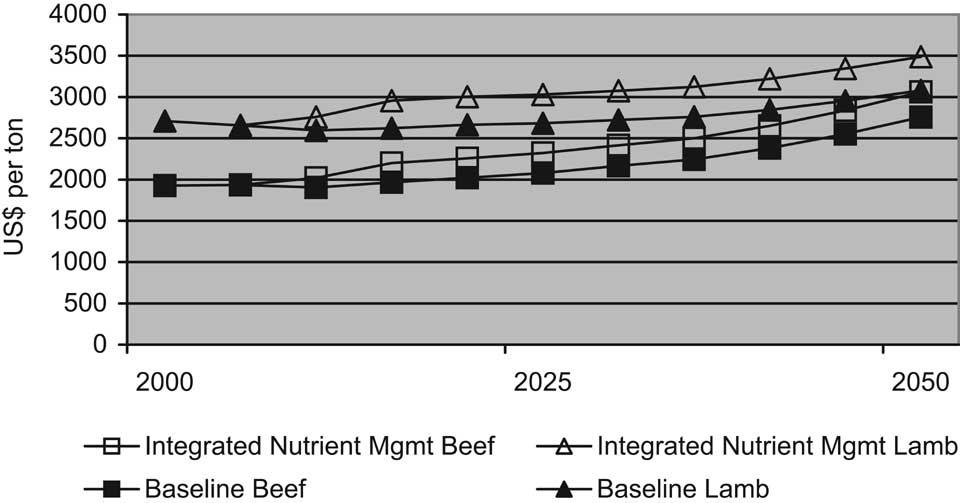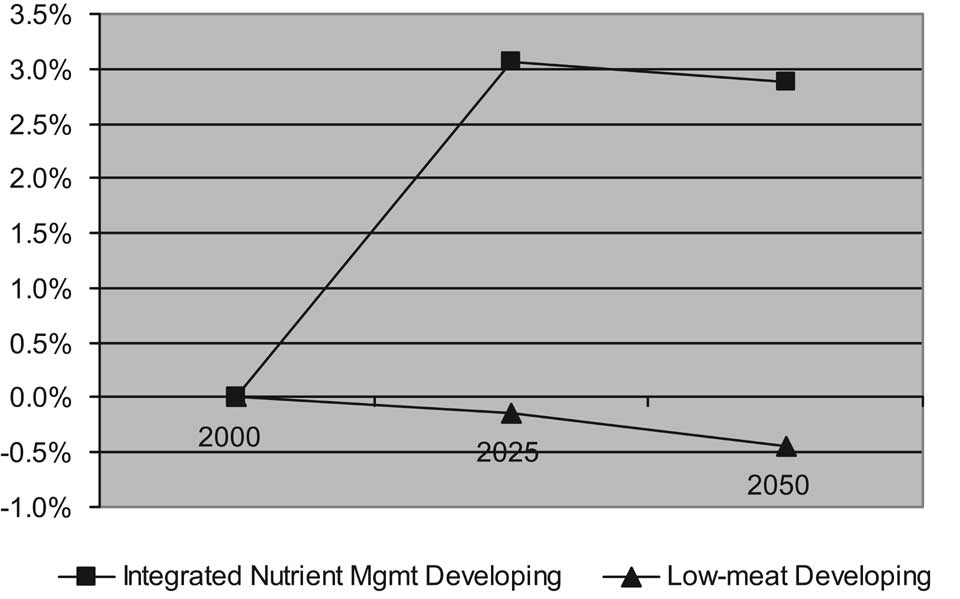
Figure 5-40. Average world prices for meats and other foods under reference run and low growth in meat demand variant. Source: IFPRI IMPACT model simulations.

Figure 5-41. World prices for maize and soybean under reference run and increasing use of integrated nutrient management variant. Source: IFPRI IMPACT model simulations.

Table 5-26. Change in per capita food consumption of meats and cereals under low meat demand variant. Source: IFPRI IMPACT model simulations.
Crop |
Region |
2025 |
2050 |
Cereals |
NAE |
1.6% |
3.1% |
|
CWANA |
0.2% |
0.9% |
|
ESAP |
0.7% |
1.8% |
|
LAC |
0.3% |
1.1% |
|
SSA |
0.4% |
1.0% |
Meat |
NAE |
-1.2% |
-0.6% |
|
CWANA |
0.5% |
-1.3% |
|
ESAP |
-4.0% |
-9.8% |
|
LAC |
1.0% |
-0.1% |
|
SSA |
2.3% |
4.6% |
Source: IFPRI IMPACT model simulations.
pected to lead to rapidly raising levels of obesity and associated noncommunicable diseases. Weight gain, hypertension, high blood cholesterol, and a lack of vegetable and fruit intake result in significant health burdens in both high and low-income countries (Ezzati et al., 2002). The greater supply of and demand for energy-dense, nutrient-poor foods is leading to obesity and related diseases in countries that have yet to overcome childhood undernutrition (Hawkes and Ruel, 2006).
Further, approximately 840 million people do not receive enough energy from their diets (Kennedy et al., 2003) and over three billion people are micronutrient deficient, most of them women, infants, and children in resource-poor families in low-income countries (Welch and Graham, 2005). Micro-nutrient deficiencies increase morbidity and mortality, decrease worker productivity, and cause permanent impairment of cognitive development in infants and children.
